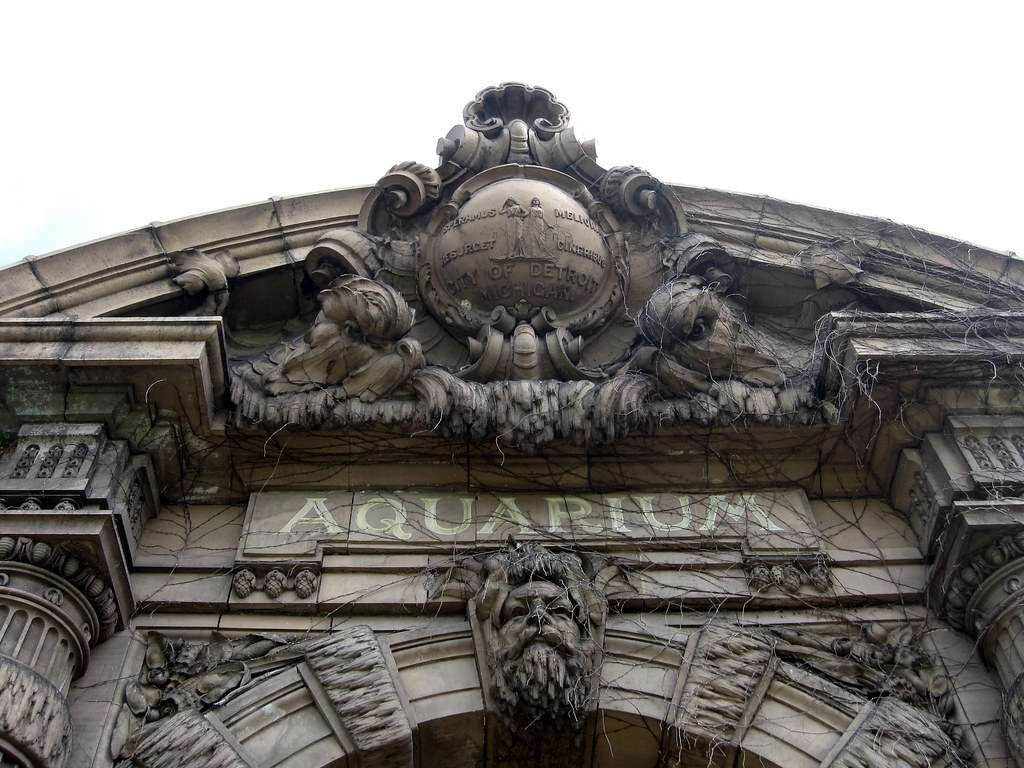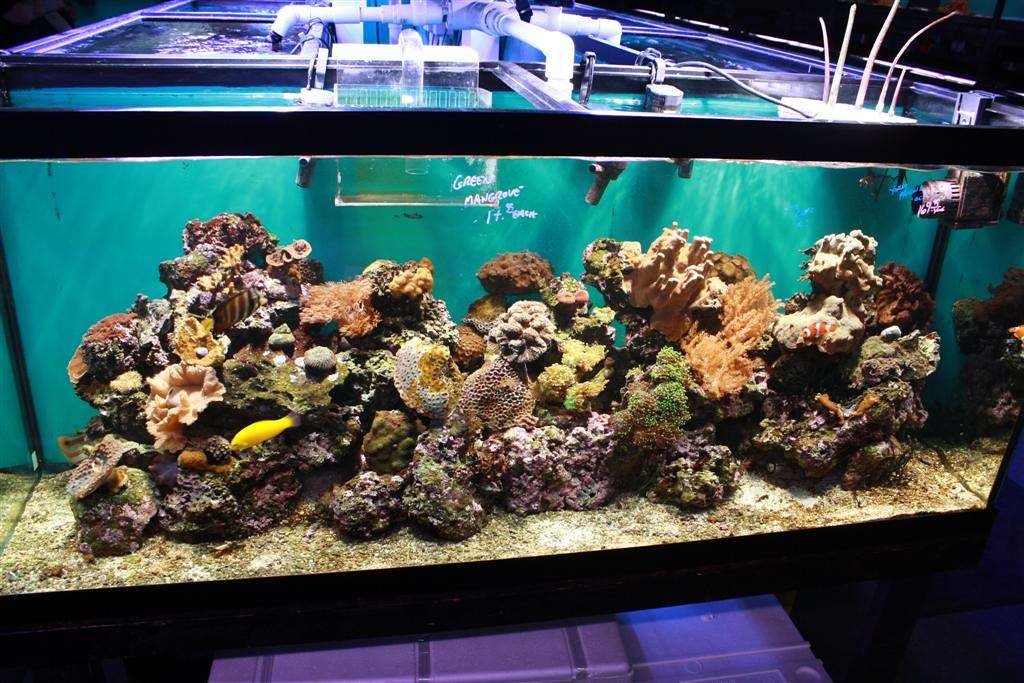Living Reef Vs. Artificial Reef Aquariums
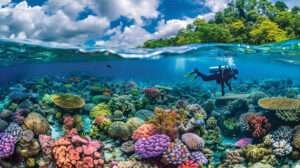
When you’re in the market to buy an aquarium, you’ll face the significant choice of between a living or an artificial reef. Unfortunately, there is a lot of misinformation, misconception, and general lack of understanding about the differences between the two options. That’s why it’s important to find someone you trust who can offer you accurate information to help you make the right decision. At Creative Coral Design, we can guide you in making choices that best suit your lifestyle for your custom-made aquarium.
BIOLOGICAL DIFFERENCES
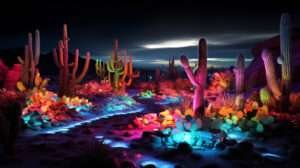
A Living Reef aquarium is a self-contained ecosystem where the live rock serves as a base for biological filtration. The fish feed on prepared food and living organisms within the reef. The fish waste is then broken down by a “cleanup crew” consisting of crabs, shrimp, snails, sea cucumbers, and other organisms. The waste is then filtered out by various clams, sponges, anemones, and corals.
On the other hand, an Artificial Reef aquarium provides more control over the ecosystem. Since there is no live rock, you need to create a surface area for aerobic bacteria. This can be achieved through a “wet-dry” or “trickle” filter system, where water from the aquarium is trickled over high surface area media, such as bio-balls, and returned to the aquarium. The bacteria are usually purchased in a concentrated form and introduced into the aquarium to “seed” the biological filtration.
Unlike Living Reef setups, Artificial Reef aquariums do not have invertebrates, which allows you to use medications to treat sick fish.
BIODIVERSITY
Living Reef aquariums have a higher biodiversity due to the presence of many species of invertebrates. However, the fish selection is limited because some fish may nibble on ornamental clams until eaten entirely or force the clam to close and starve to death. Thus, choosing reef-safe fish that do not harm other fish and invertebrates is crucial. The options for such fish depend on the different species in the aquarium.
Artificial Reef aquariums allow for a slightly more comprehensive range of fish choices. Some fish primarily feed on live foods found in the live rock, which cannot survive long-term in a faux reef aquarium. However, many fish feed only occasionally on coral polyps or clam mantles, and they will do well on prepared and frozen foods without damaging the synthetic corals. Examples of such fish include angelfish, triggerfish, basses, eels, lionfish, and many more.
AESTHETICS
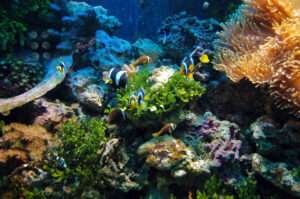
A healthy and well-established Living Reef aquarium has a unique and rhythmic flow, with the movement of various fish, corals, and other invertebrates. However, it takes time to establish the aquarium and fully experience its diversity.
On the other hand, an Artificial Reef has its beauty, with faux coral decor cast in many realistic and beautiful colors that resemble real coral skeletons. One of the best features of artificial reefs and fake corals is their ability to be custom-made, allowing you to bring your wildest vision into reality. The possibilities are endless, whether you want to simulate a deep-water pillar or patch reef.
MAINTENANCE
In a Living Reef aquarium, it is crucial to have precise control over water chemistry since the invertebrates are sensitive to many parameters. Water testing should be performed weekly, and a few more chemicals than in a fish-only setup should be added. Due to the addition of calcium for the corals, a purple-encrusting alga may grow on everything, making it difficult to scrape off some equipment and certain areas of the aquarium. It is generally recommended to use a more expensive, higher-quality salt that accurately represents the chemical percentages of authentic sea salt to ensure the longevity of the invertebrates. More regular water changes are also necessary. If there is a power outage, the water flow needs to be restored, or an air stone needs to be added within two hours and maintained for the blackout.
In an Artificial Reef aquarium, water chemistry is still essential. Still, fish are much more tolerant of slight variations than invertebrates are, and certain chemicals do not need to be kept at such precise levels. Supplemental chemical additions are fewer and farther between in a synthetic reef aquarium. Water flow in an artificial reef aquarium is essential but can be lower. Since there are no invertebrates to filter feed, sponges, filter pads, and canisters should be employed to help clarify the water. These must be inspected, cleaned, and replaced regularly. If there is a power outage, water flow must be restored, or an air stone must be added within two hours and maintained for the blackout.
OPERATING COSTS
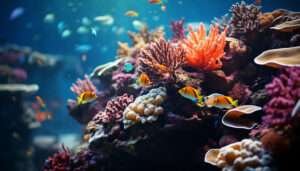
It’s important to note that a custom-made Living Reef aquarium will usually cost more to operate due to the intense lighting required, resulting in a higher power bill. However, the cost increases due to the higher quality of salt required are relatively minor, and the additional chemicals needed are also relatively minimal, especially if a calcium reactor is utilized. It is highly recommended to have your aquarium serviced weekly by a maintenance company, which will add to your operating costs over a synthetic reef aquarium.
On the other hand, a custom-made artificial reef aquarium will cost slightly less than a Living Reef aquarium since there are typically fewer lights. If you employ a maintenance company, they will usually recommend a monthly or bi-monthly service. The initial costs are about the same for a custom artificial reef and a living reef aquarium of comparable size. However, the long-term cost is higher with a living reef aquarium.
Regardless of whether you choose a live or artificial reef, adding an aquarium to your home can bring the ocean’s beauty inside, adding a unique element that has been proven to relieve stress.
At Creative Coral Design, we offer the finest coral replicas, reef inserts, and custom aquarium design services for residential, commercial, and public aquariums. Tap the button below to speak to us about your aquarium concerns today. Creative Coral Design is always willing to listen, whether you want to talk to us or give us feedback.

